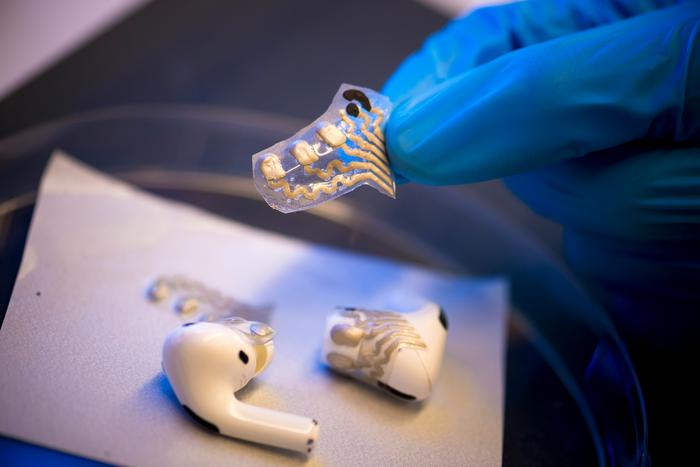
Researchers at the University of Iowa have delivered a compelling message emphasizing the critical need to assess patients regarding their physical activity levels. Findings from a comprehensive study reveal a robust link between physical activity and a substantial reduction in the risk of chronic diseases. Led by Lucas Carr, an esteemed associate professor in the Department of Health and Human Physiology, the research assessed data from over 7,000 patients at the University of Iowa Health Care Medical Center. Participants in this important survey provided insights through a structured questionnaire focusing on their exercise habits.
The analysis indicated that individuals engaging in a higher amount of physical activity—specifically those exercising moderately to vigorously for at least 150 minutes each week—demonstrated a statistically significant reduction in the incidence of 19 different chronic conditions. Notable diseases included cardiovascular ailments, certain cancers, respiratory issues, and Type 2 diabetes, all of which are prevalent concerns in modern health care. This connection underscores the inherent value of promoting physical activity as a preventive measure against many of the most significant health threats facing society today.
The study also highlighted alarming trends among individuals with minimal physical activity. Those who reported engaging in little to no exercise were identified as being at an elevated risk for developing chronic diseases. This finding serves as a clarion call for health care professionals and institutions to reconsider current practices regarding patient wellness assessments. Given that a large proportion of chronic illnesses stem from lifestyle choices, proactive engagement with patients regarding their physical activity could be instrumental in curbing these health challenges.
In the wake of these findings, the researchers strongly advocate for health care systems to implement screening tools that effectively monitor patients’ physical activity levels. Creating an environment where patients can receive detailed information about health and wellness services is crucial, particularly for those identified as being physically inactive and thus at greater risk. Carr remarked on the challenges health care providers face: “In our health care environment, there’s no easy pathway for a doctor to be reimbursed for helping patients become more physically active.”
This statement sheds light on a significant barrier in the health care system. The lack of direct financial incentives for physicians to promote physical activity presents a challenge in the implementation of preventative health measures. As many patients indicate insufficient activity levels, Carr emphasizes the necessity for clear pathways that connect these individuals with supportive services such as exercise prescriptions and guidance from community health specialists. By establishing these connections, the health care system could play a transformative role in enhancing the physical well-being of patients.
Historically, hospitals in the United States have neglected to inquire about patients’ physical activity levels during medical assessments. Carr and his team conducted the study in partnership with Britt Marcussen, a family medicine physician at UI Health Care. They offered a simple yet effective questionnaire during annual wellness exams to gather relevant data. The study was conducted over a five-year span, from late 2017 to late 2022, allowing for a comprehensive collection of patient responses.
The Exercise Vital Sign survey, the focus of their efforts, comprised two brief questions related to the patient’s exercise routine. These questions—addressing frequency and duration of moderate to vigorous exercise—were administered via tablet, ensuring minimal disruption during patient visits. Impressively, Carr indicated that the survey typically takes less than 30 seconds to complete, making it an efficient tool for gathering critical health information.
Intriguingly, researchers compared the responses of those who completed the surveys with a larger cohort of over 33,000 patients who were not offered the questionnaire during other hospital visits. The results demonstrated a noticeable trend: patients who engaged with the survey were generally younger and reported better health outcomes compared to their counterparts who did not participate. This data suggests that patients who actively seek annual wellness checks may also be more inclined to engage in healthy lifestyle choices such as regular exercise.
The correlation between physical activity and reduced chronic disease risk is not a new concept. However, this research serves to reaffirm the necessity of addressing exercise habits within patient assessments. Carr notes, “We believe this finding is a result of those patients who take the time to come in for annual wellness exams also are taking more time to engage in healthy behaviors, such as being physically active.”
Furthermore, the study presented evidence supporting the financial viability of exercise counseling. A related study published in the Journal of Physical Activity and Health by Carr’s team revealed that when healthcare providers billed for exercise counseling services, the reimbursement rate by insurance companies reached nearly 95 percent. This statistic not only reinforces the financial sustainability of integrating physical activity discussions into patient care but also highlights the potential for such measures to be well-received by both providers and insurers.
As Carr articulated, “Our findings suggest the recommended physical activity billing codes are reimbursed at a high rate, which reinforces the idea to make physical activity surveys and counseling services available.” This presents a dual opportunity for health care systems: improving patient health outcomes while also enhancing the feasibility of these initiatives through institutional support and reimbursement policies.
The collective efforts of Carr and his colleagues—including study co-authors Marcussen and Mary Schroeder—press the importance of embedding physical activity assessments into the standard practice of patient care. Their study, titled “Screening Patients for Physical Inactivity Helps Identify Patients at Risk for Cardiometabolic and Chronic Diseases,” highlights the need for systematic change in how health professionals approach patient wellness and chronic disease prevention. The research received funding from UI Health Care Stead Family Children’s Hospital, demonstrating institutional support for these groundbreaking initiatives.
In conclusion, the call to action for hospitals and health care providers is clear: integrating routine inquiries about physical activity can significantly impact patient health and reduce the prevalence of chronic diseases. Carr’s pioneering study not only reinforces the existing knowledge surrounding physical activity and health outcomes but also lays the groundwork for practical solutions that can transform the landscape of patient care.
Subject of Research: Assessment of physical activity levels and their relationship with chronic disease risk
Article Title: Screening Patients for Physical Inactivity Helps Identify Patients at Risk for Cardiometabolic and Chronic Diseases
News Publication Date: 26-Dec-2024
Web References: [Not available]
References: [Not available]
Image Credits: Credit: University of Iowa
Keywords: Public health, physical activity, chronic disease, wellness exams, health care systems, exercise counseling, patient care.






